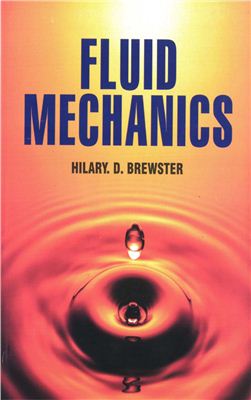Oxford Book Company, 2009. 312 p ISBN: 8189473980,
9788189473983
Preface
Fluid Mechanics, understanding and applying the principles of how motions and forces act upon fluids such as gases and liquids, is introduced and comprehensively covered in this widely adopted text. This book 'Fluid Mechanics' continues the tradition of precision, accuracy, accessibility and strong conceptual presentation. The author balances three separate approaches integral, differential and experimental to provide a foundation for fluid mechanics concepts and applications. The application of theory in fluid mechanics and enables students new to the science to grasp fundamental concepts in the subject. Despite dramatic advances in numerical and experimental methods of fluid mechanics, the fundamentals are still the starting point for solving flow problems. This textbook introduces the major branches of fluid mechanics of incompressible and compressible media, the basic laws goveing their flow, and gas dynamics. Fluid Mechanics demonstrates how flows can be classified and how specific engineering problems can be identified, formulated and solved, using the methods of applied mathematics. The concepts of fluid mechanics, covering both the physical and mathematical aspects of the subject. The text aims to bridge the gap between civil and mechanical engineering courses, and hence covers a wide variety of topics. This book remains one of the most comprehensive and useful texts on fluid mechanics available today, with applications going from engineering to geophysics, and beyond to biology and general science. This book features the applications of essential concepts as well as the coverage of topics in the this field.
Preface
Fluid Mechanics, understanding and applying the principles of how motions and forces act upon fluids such as gases and liquids, is introduced and comprehensively covered in this widely adopted text. This book 'Fluid Mechanics' continues the tradition of precision, accuracy, accessibility and strong conceptual presentation. The author balances three separate approaches integral, differential and experimental to provide a foundation for fluid mechanics concepts and applications. The application of theory in fluid mechanics and enables students new to the science to grasp fundamental concepts in the subject. Despite dramatic advances in numerical and experimental methods of fluid mechanics, the fundamentals are still the starting point for solving flow problems. This textbook introduces the major branches of fluid mechanics of incompressible and compressible media, the basic laws goveing their flow, and gas dynamics. Fluid Mechanics demonstrates how flows can be classified and how specific engineering problems can be identified, formulated and solved, using the methods of applied mathematics. The concepts of fluid mechanics, covering both the physical and mathematical aspects of the subject. The text aims to bridge the gap between civil and mechanical engineering courses, and hence covers a wide variety of topics. This book remains one of the most comprehensive and useful texts on fluid mechanics available today, with applications going from engineering to geophysics, and beyond to biology and general science. This book features the applications of essential concepts as well as the coverage of topics in the this field.

